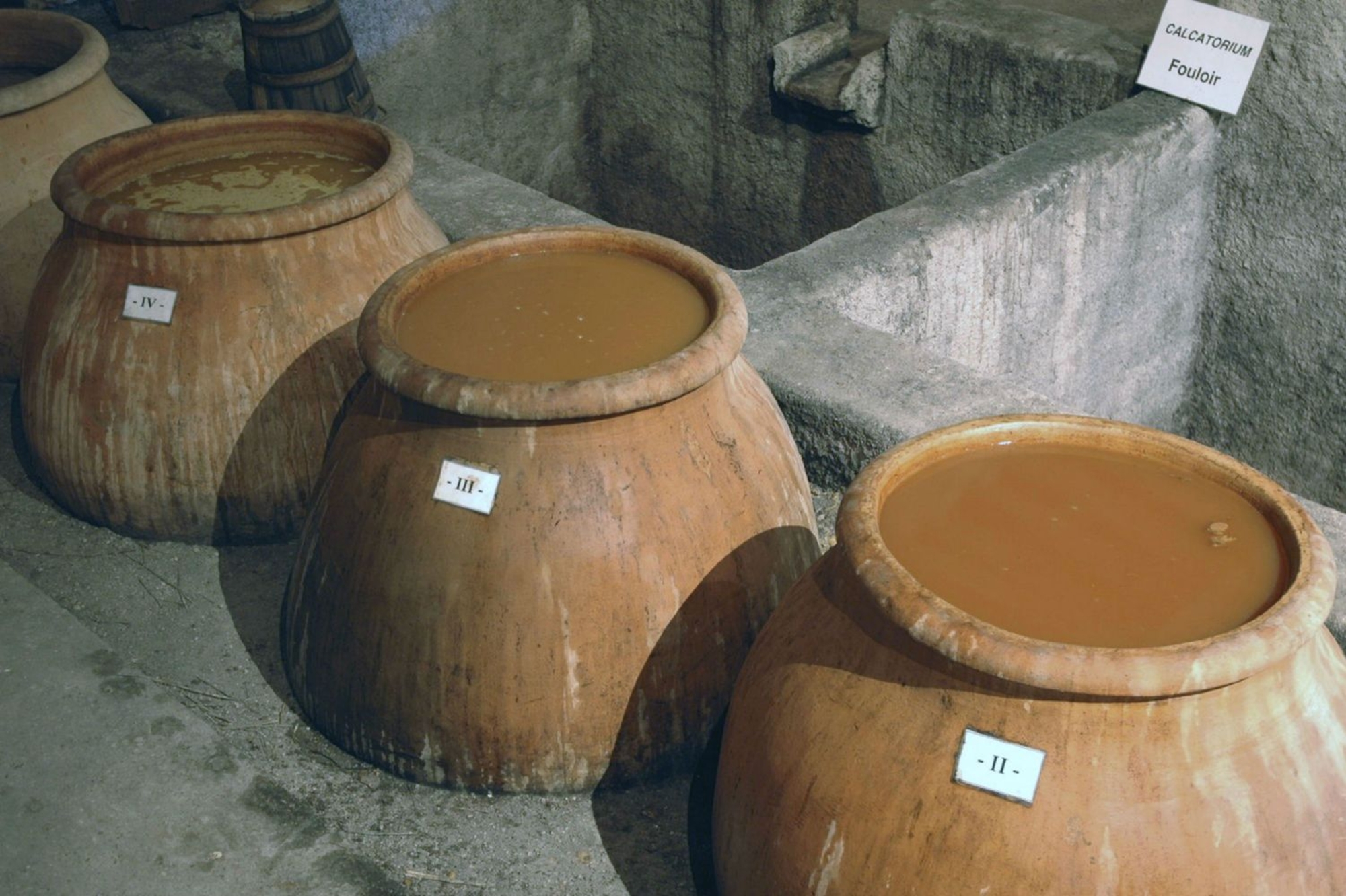
- Home
- Loupian, a villa in Gallia Narbonensis
- Wine-growing villas in the Early Roman Empire
- Amphorae for the wine trade
Following the practice of other workshops in Narbonese Gaul, the Loupian site produced a wide variety of ceramic objects – roof tiles and tableware, but also flat-bottomed amphorae. The so-called "Gaulois 4" amphora type was the standard vessel for storage and trade adopted by every wine-producer as of the second quarter of the 1st century CE. These pear-shaped, thin-walled amphorae, capable of holding some thirty litres, were sometimes covered in straw for transport. They were systematically coated in pitch to make them leakproof, perhaps in order to keep a sometimes instable wine free of contaminants that could affect its taste.
Some of these amphorae, when traded, bore tituli picti – painted inscriptions on their necks giving such information as the varietal the wine was made from – such as the Aminean vines mentioned in ancient sources –the age of the wine, the capacity of the amphora or the owner. When they were made, stamps were sometimes added to the handle or body. At Loupian, some one hundred such marks have been identified, pressed into the clay prior to firing via a lead die, bearing the letters MAF. They have been interpreted as the initials of the typical three-part name of a Roman citizen – definitely the name of the person who had invested so much in the estate and its villa. Identical marks have been found at Ostia, the port of Rome.

